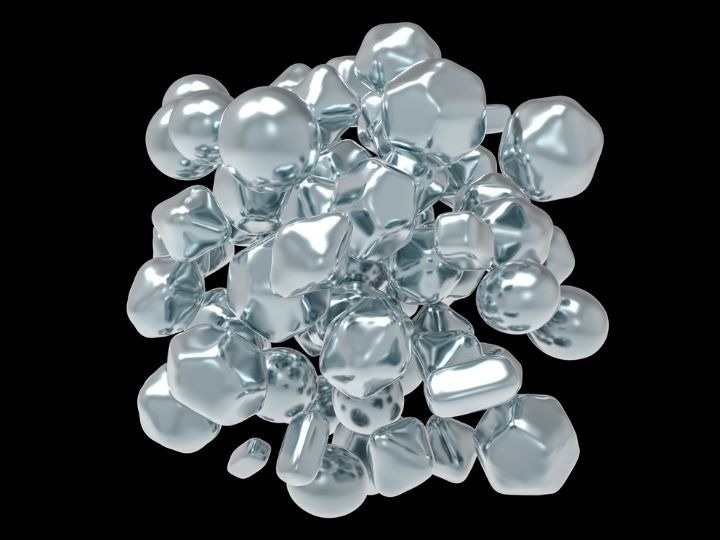Over the past 20 years, numerous high-performance thermoelectric materials have been discovered. This has been done in the absence of effective devices to transform the energy they generate into emission-free power. Their promise has not yet been fulfilled.

Image Credit: University of Houston
An international research group headed by a University of Houston physicist and many of his former students has reported a new method to build thermoelectric modules, with the help of silver nanoparticles, to link the electrode and metallization layers of modules.
The use of silver nanoparticles was tested for stability in modules made of three varied, sophisticated thermoelectric materials developed to function throughout an extensive range of temperatures.
The study was reported in the Nature Energy Journal on May 1st, 2023.
Thermoelectric materials have gained great interest due to their possibility as a source of clean energy, produced when the material converts heat—like waste heat produced by power plants or other industrial processes—into electricity by using the flow of heat current from a warmer area to a cooler area.
However, taking benefit of that potential means finding a material that could link to the cool and hot sides of the material both thermally and electrically without changing the performance of the material.
The connective material, or solder, has been subjected to melting to make an interface between the two sides. This implies the solder should have a greater melting point compared to the operating temperature of the device.
This is done to ensure stability while the device is functioning, stated Zhifeng Ren, Director of the Texas Center for Superconductivity at the University of Houston (UH) and a corresponding author on the study. If the thermoelectric material functions at hotter temperatures, the connective layer will be subject to re-melt.
However, it could also be an issue if the connective material consists of too high a melting point since high temperatures could impact the performance and stability of the thermoelectric materials at the time of the connection process.
Furthermore, the ideal connective material would both have a comparatively low melting point for module assembling so as not to destabilize the thermoelectric materials but then be able to resist the high operating temperatures in the absence of re-melting.
Silver consists of useful properties for such a connective material, having high electrical conductivity and high thermal conductivity. However, it also has a comparatively high melting point, at 962 °C, which could impact the stability of several thermoelectric materials.
For this work to be done, the scientists benefitted from the fact that silver nanoparticles consist of a much lower melting point than bulk silver. The nanoparticles got back to a bulk state following the assembly of the module, thereby regaining the greater melting point for operations.
If you make silver into nanoparticles, the melting point could be as low as 400 degrees or 500 degrees C, depending on the particle size. That means you can use the device at 600 C or 700 C with no problem, as long as the operating temperature remains below the melting point of bulk silver, or 962 C.
Zhifeng Ren, Study Corresponding Author and Director, Texas Center for Superconductivity, University of Houston
Ren worked on the project along with five former students and post-doctoral scientists from the Ren research group. They are currently at the Harbin Institute of Technology in China, Shenzhen, and the Beijing National Laboratory for Condensed Matter Physics at the Chinese Academy of Sciences in Beijing.
The silver nanoparticles were tested by scientists with three renowned thermoelectric materials, each of which functions at a different temperature.
According to the scientists, a lead tellurium-based module, which operates at a low temperature of around 573 K up to about 823 K (300 °C to 550 ° C), produced a heat-to-electricity conversion efficiency of nearly 11% and remained stable following 50 thermal cycles.
Also, they made use of the silver nanoparticles as the connective material in modules with the help of low-temperature bismuth telluride and a half-Heusler high-temperature material. This denotes the idea would work for a range of thermoelectric materials and purposes.
Different materials are utilized based on the intended heat source, stated Ren, to guarantee the materials can resist the applied heat.
But this paper proves that whatever the material, we can use the same silver nanoparticles for the solder as long as the applied heat does not go above 960 degrees C.
Zhifeng Ren, Study Corresponding Author and Director of the Texas Center for Superconductivity, University of Houston
This is done to make the melting point of bulk silver lower.
Besides Ren, co-authors of the study include Li Yin, Fan Yang, Xin Bao, Zhipeng Du, Xinyu Wang, Jinxuan Cheng, Hongjun Ji, Jiehe Sui, Xingjun Liu, Feng Cao, Jun Mao, Mingyu Li, and Qian Zhang, all with the Harbin Institute of Technology; Wenhua Xue with the Harbin Institute of Technology and the Beijing National Laboratory for Condensed Matter Physics; and Yumei Wang with the Beijing National Laboratory for Condensed Matter Physics.
Journal Reference
Yin, L., et al. (2023) Low-temperature sintering of Ag nanoparticles for high-performance thermoelectric module design. Nature Energy. doi.org/10.1038/s41560-023-01245-4.